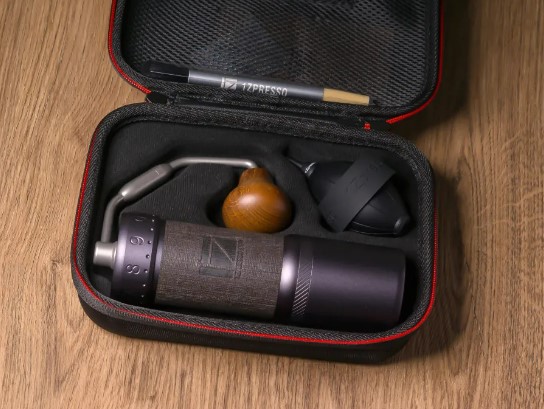Master the Art of Grinding Coffee Beans: An Overview to Coffee Grinders
For coffee enthusiasts, the procedure of grinding coffee beans is even more than just a routine task; it is an art form that can considerably influence the flavor and quality of the last brew. Comprehending the nuances of different grinder kinds, choosing the suitable grind size, and using the right strategies are vital actions in the direction of achieving that perfect mug of coffee.
Sorts Of Coffee Grinders
There are 3 key kinds of coffee mills frequently utilized by coffee lovers: blade grinders, burr grinders, and manual mills. Blade mills are one of the most basic kind, utilizing a straightforward blade to cut the coffee beans. While they are cost effective and simple to use, they often lead to irregular coffee grounds due to inconsistent grinding. Burr mills, on the other hand, offer more precision by crushing the beans between a moving grinding wheel and a non-moving surface. This results in a consistent work size, which is vital for a consistent coffee taste. Burr grinders are available in both level and cone-shaped forms, each offering slightly different grinding characteristics.
Hands-on mills, as the name suggests, call for hands-on initiative to grind the coffee beans. Each type of coffee mill has its benefits and suitable use situations, providing to the diverse choices of coffee enthusiasts.

Selecting the Right Work Size
With an understanding of the different kinds of coffee mills, the next important step in attaining the best cup of coffee is choosing the right grind dimension. The grind dimension plays a considerable role in identifying the taste profile of your coffee (1Zpresso J-Ultra). Various brewing techniques call for specific grind dimensions to enhance the removal of flavors from the coffee premises
For a rugged work, suitable for French press and cool brew approaches, the coffee beans ought to appear like breadcrumbs, giving a durable and bold taste. Medium-coarse grinds, suitable for Chemex or Clever Dripper, have a structure comparable to coarse sand, providing a well balanced taste.
Medium grinds, frequently made use of in drip coffee machine, have a consistency appearing like regular sand, leading to an all-around taste. Great grinds, ideal for espresso machines, are similar to salt, generating a rich and extreme preference. Extra-fine grinds, utilized in Turkish coffee, are as fine as powdered sugar and create a solid and powerful mixture.
Grinding Techniques for Optimum Taste
To extract the greatest possibility of taste from your coffee beans, mastering correct grinding techniques is crucial. Consistency is crucial when it comes to grinding coffee beans for ideal taste. By paying attention to these grinding methods, you can elevate the taste profile of your coffee and appreciate a much more enjoyable cup every time.
Upkeep and Cleaning Tips

Replace any worn-out components promptly to maintain the quality of your coffee grind. By complying with these upkeep and cleansing tips, you can guarantee that your coffee mill continues to supply scrumptious freshly see here ground coffee for years Learn More Here to come.
Troubleshooting Common Grinder Issues


Ensuring your coffee grinder works smoothly requires experienced troubleshooting of usual problems that might emerge during its usage. One typical problem with coffee mills is inconsistent work size. This concern can happen due to plain blades, incorrect calibration, or uneven coffee beans. To resolve this, ensure your mill's blades are sharp and correctly straightened, calibrate the grinder according to the preferred grind size, and drink the grinder delicately while in operation to aid attain a much more uniform grind.
This can take place when oils from the coffee beans build up and block the mill's chute. To resolve this, dismantle the grinder and clean all parts extensively, paying unique attention to the chute and burrs.
Last but not least, if your mill is creating extreme noise throughout operation, it can show a trouble with the electric motor or inner parts. In such instances, it is recommended to get in touch with the manufacturer's directions for troubleshooting steps or seek professional support to identify and correct the concern promptly.
Conclusion
Finally, grasping the art of grinding coffee beans involves comprehending the different types of coffee mills, picking the appropriate work dimension, using proper grinding methods for optimal flavor, and preserving and cleaning the grinder frequently. By complying with these guidelines and troubleshooting explanation common grinder problems, coffee lovers can raise their coffee brewing experience and delight in a delicious mug of coffee every single time.